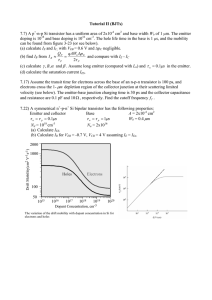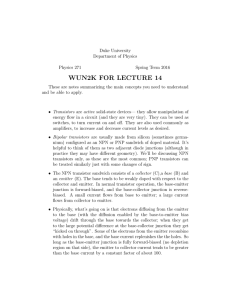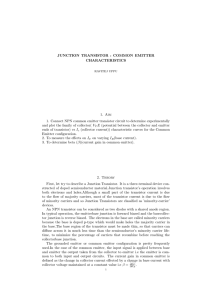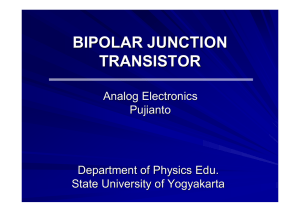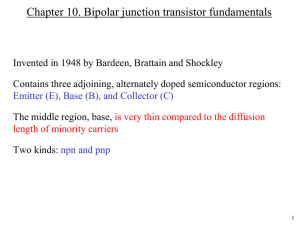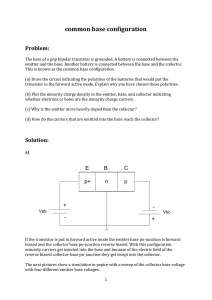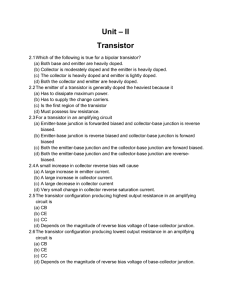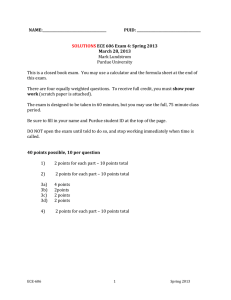Notes on NPN transistors - David Kleinfeld - Spring 2016... 1. Introduction
advertisement
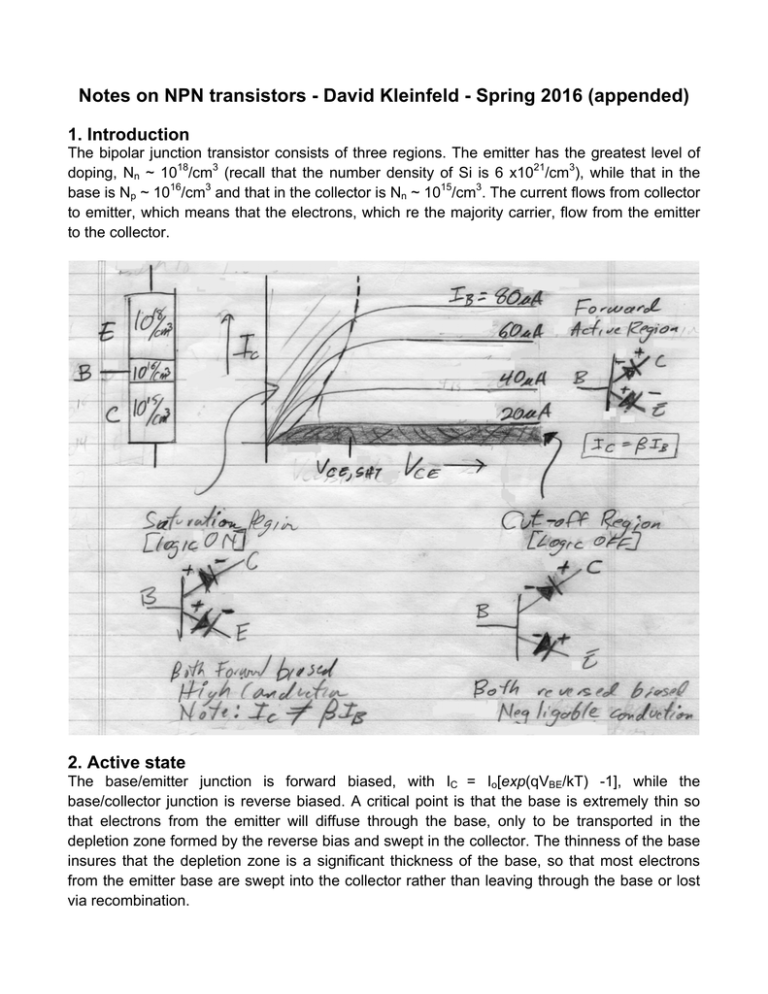
Notes on NPN transistors - David Kleinfeld - Spring 2016 (appended) 1. Introduction The bipolar junction transistor consists of three regions. The emitter has the greatest level of doping, Nn ~ 1018/cm3 (recall that the number density of Si is 6 x1021/cm3), while that in the base is Np ~ 1016/cm3 and that in the collector is Nn ~ 1015/cm3. The current flows from collector to emitter, which means that the electrons, which re the majority carrier, flow from the emitter to the collector. 2. Active state The base/emitter junction is forward biased, with IC = Io[exp(qVBE/kT) -1], while the base/collector junction is reverse biased. A critical point is that the base is extremely thin so that electrons from the emitter will diffuse through the base, only to be transported in the depletion zone formed by the reverse bias and swept in the collector. The thinness of the base insures that the depletion zone is a significant thickness of the base, so that most electrons from the emitter base are swept into the collector rather than leaving through the base or lost via recombination. Electrons in the emitter suffer one of three fates: (1) Recombination with holes in the base (2) Exiting the base through the external lead (3) Drift into the collector; this is the major current by a factor of ~ 100! 3. Constitutive relations IC = β IB and IE = IC + IB. Thus IE = (1+β) IB = (1+β)/β IC, etc. 4. Voltage controlled circuit 5. Current controlled circuit 6. Simplified model of transistor in active zone We see that VBE is of order 0.7 V. So a brutal model is to replace the transistor, when operating in the Active region, with a model in which the base is hooked to a battery and the collector is hooked to a dependent current source. 7. Consequence of too large a base voltage: Drop in β 8. Analysis of a simple driver circuit
